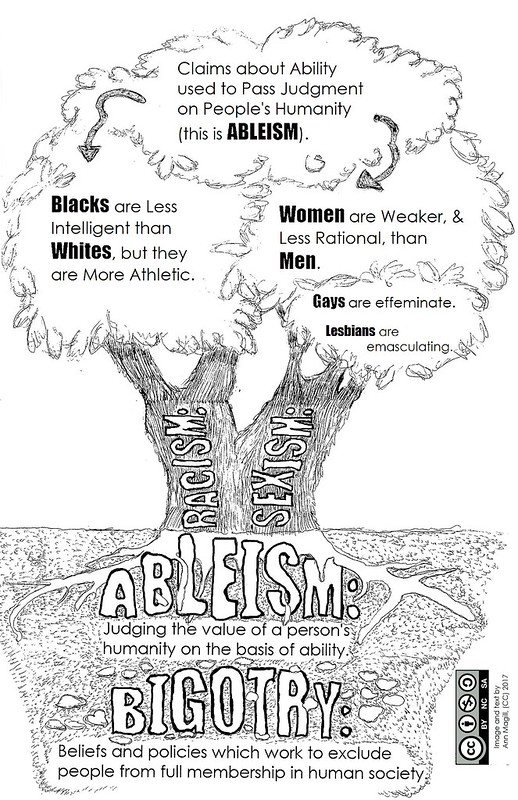(This post is cross-posted to ![[community profile]](https://www.dreamwidth.org/img/silk/identity/community.png) queerly_beloved)
queerly_beloved)
Preface:
Back in 2012, when I was first exploring the cultural link between concepts of the monstrous, and cultural attitudes toward disability (and queerness),![[personal profile]](https://www.dreamwidth.org/img/silk/identity/user.png) spiralsheep (no longer online) pointed me to a Master's thesis: "When a Knight meets a Dragon Maiden:
spiralsheep (no longer online) pointed me to a Master's thesis: "When a Knight meets a Dragon Maiden:
Human Identity and the Monstrous Animal Other," by Lydia Zeldenrust, and published online at Academia.Edu. Quote:
And this was living in my head for several years before it clicked that all of the royal frog-man stories are basically gender-flipped versions of the Dragon Maiden tales.
The whole point of these encounters, according to Zeldenrust, was for the knight to recognize the human that is trapped inside the dragon form, and not to be confused into thinking its an actual dragon that needs to be killed. This is how they prove their right to the Divinely Ordained Social Privilege, somewhere between kings and angels.
(When I read that, all those encounters I'd had, where normate people said: "Oh, but I don't see you as Disabled, I see you as Human!" -- while I'm sitting in front of them in my wheelchair -- suddenly made sense: They're all white-knight wannabes, reassuring themselves that they've earned their normate privileges)
The problem with the Grimm Brothers' version of the story, though, is that the princess never recognizes the frog king as human until after he loses his frog-shaped body, and therefore (according to chivalric tradition) doesn't deserve her happy ending.
So I tweaked the spell, just a bit, so that it's reciprocity between human beings that breaks the spell, rather than simply sharing physical space with the most beautiful person ever.
Where we left off:
( Under the Linden Tree: part 2 (1,420 words) )
(Back to Part One)
Preface:
Back in 2012, when I was first exploring the cultural link between concepts of the monstrous, and cultural attitudes toward disability (and queerness),
Human Identity and the Monstrous Animal Other," by Lydia Zeldenrust, and published online at Academia.Edu. Quote:
In general, the dragon maidens can be divided into two groups: the first is a rather large group in which the dragon maiden is waiting to be freed from her spell by means of a Perilous Kiss and then turns back into a human, the second group deals with a woman who turns into a half-dragon or serpent at specific times and is not to be seen by her husband in this state, but when this does happen she eventually becomes the animal.
And this was living in my head for several years before it clicked that all of the royal frog-man stories are basically gender-flipped versions of the Dragon Maiden tales.
The whole point of these encounters, according to Zeldenrust, was for the knight to recognize the human that is trapped inside the dragon form, and not to be confused into thinking its an actual dragon that needs to be killed. This is how they prove their right to the Divinely Ordained Social Privilege, somewhere between kings and angels.
(When I read that, all those encounters I'd had, where normate people said: "Oh, but I don't see you as Disabled, I see you as Human!" -- while I'm sitting in front of them in my wheelchair -- suddenly made sense: They're all white-knight wannabes, reassuring themselves that they've earned their normate privileges)
The problem with the Grimm Brothers' version of the story, though, is that the princess never recognizes the frog king as human until after he loses his frog-shaped body, and therefore (according to chivalric tradition) doesn't deserve her happy ending.
So I tweaked the spell, just a bit, so that it's reciprocity between human beings that breaks the spell, rather than simply sharing physical space with the most beautiful person ever.
Where we left off:
As if struck by a sudden thought, he turned to the frog tucked under the princess's arm, and said, with a grand sweep of his arm: "It would be a great honor to me, Sir Frog, if you would stay, and be my daughter's special guest at dinner, tonight."
Her two elder sisters, bringing up the rear of their little parade, giggled behind their hands.
The frog shifted his weight under her arm and opened his mouth as if to speak. But in the end, said nothing.
Galantha was ready to object on his behalf, and her own. But her father looked her in the eye with a frown, daring her to disobey his wishes a second time that day.
She dropped her gaze to the floor. "Yes. Of course it would be my honor. Please, be my guest."
No sooner were those words out of her mouth than the strange, horrid, feeling strengthened once more, spreading from the frog like ink from a tipped bottle. She fought to keep from hurling him to the floor that very instant.
( Under the Linden Tree: part 2 (1,420 words) )
(Back to Part One)




